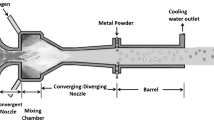Abstract
Natural gas furnaces are the major source of heat for Heating, Ventilation, and Air Conditioning (HVAC) applications. The usage of partially premixed type burners in gas furnaces are significant from past few years. The use of Computational Fluid Dynamics (CFD) on solving and understanding flame and heat transfer characteristics in these devices are limited. The accurate modelling of turbulence chemistry interactions in any combustion device has always been a great challenge to the CFD engineers. Especially, gas heat furnaces uses a lot of components with turbulent flow making the modelling more challenging. Since CFD must be able to predict the combustion flame behavior such as flame structure, flame length, flame temperature etc. over a region of fast chemical reactions zone, it is important to understand the different combustion modelling methods. In this paper an attempt has been made to compare two different modelling techniques, one using a simple global reaction mechanism Eddy Dissipation Method (EDM) and a detailed chemistry model Flamelet Generated Manifold (FGM). Most industries have been using these modelling methods based on the required application. The effect of air to fuel ratios on flame temperatures, conjugate heat transfer, mass fractions of CO2 and the furnace efficiency has been analyzed for both models. The study shows a better correlation of results with test using the FGM model as compared with EDM, in terms of air rise temperature, flue gas temperature and thermal efficiency.











Similar content being viewed by others
Notes
Yplus (y+) is dimensionless distance from the first mesh node to the wall.
REFERENCES
B. F. Magnussen and B. H. Hjertager, “On mathematical modeling of turbulent combustion with special emphasis on soot formation and combustion,” Symp. (Int.) Combust. 16, 719–729 (1977). https://doi.org/10.1016/S0082-0784(77)80366-4
G. Tunç and I. Yılmaz, “Comparison of the numerical models for the temperature distributions of non-premixed swirling methane flame,” Politek. Derg. 22, 819–826 (2019). https://doi.org/10.2339/politeknik.448529
D. B. Spalding, “Mixing and chemical reaction in steady confined turbulent flames,” Symp. (Int.) Combust. 13, 649–657 (1971). https://doi.org/10.1016/S0082-0784(71)80067-X
M. Stefan, K. Sebastian, and B. Ognijan, “Development of an eddy dissipation model for the use in numerical hybrid rocket engine combustion simulation,” in Proc. 7th Eur. Conf. on Aeronautics and Space Sciences (EUCASS), Milan, Italy, July 02–06, 2017. https://doi.org/10.13009/EUCASS2017-157
M. T. Lewandowski and I. S. Ertesvåg, “Analysis of eddy dissipation concept formulation for MILD combustion modeling,” Fuel 224, 687–700 (2018). https://doi.org/10.1016/j.fuel.2018.03.110
C. Westbrook and F. Dryer, “Chemical kinetic modeling of hydrocarbon combustion,” Prog. Energy Combust. Sci. 10, 1–57 (1984). https://doi.org/10.1016/0360-1285(84)90118-7
J. A. Van Oijen and L. P. H. de Goey, “Modelling of premixed laminar flames using flamelet-generated manifolds,” Combust. Sci. Technol. 161, 113–137 (2000). https://doi.org/10.1080/00102200008935814
J. A. Van Oijen, A. Donini, R. J. M. Bastiaans, J. H. M. ten Thije Boonkkamp, and L. P. H. de Goey, “State-of-the-art in premixed combustion modeling using flamelet generated manifolds,” Prog. Energy Combust. Sci. 57, 30–74 (2016). https://doi.org/10.1016/j.pecs.2016.07.001
J. A. Van Oijen and L. P. Y. de Goey, “Modelling of premixed counter flow flames using the flamelet-generated manifold method,” Combust. Theory Modell. 6, 463–478 (2002). https://doi.org/10.1088/1364-7830/6/3/305
J. A. Van Oijen, F. A. Lammers, and L. P. H. de Goey, “Modeling of complex premixed burner systems by using flamelet-generated manifolds,” Combust. Flame 127, 2124–2134 (2001). https://doi.org/10.1016/S0010-2180(01)00316-9
H. Bongers, J. A. Van Oijen, L. P. H. de Goey, and L. M. T. Somers, “The flamelet generated manifold method applied to steady planar partially premixed counterflow flames,” Combust. Sci. Technol. 177, 2373–2393 (2005). https://doi.org/10.1080/00102200500241198
P.-D. Nguyen, L. Vervisch, V. Subramanian, and P. Domingo, “Multidimensional flamelet-generated manifolds for partially premixed combustion,” Combust. Flame 157, 43–61 (2010). https://doi.org/10.1016/j.combustflame.2009.07.008
ANSYS Fluent Theory Guide V16.2.
L. P. H. De Goey and J. H. M. ten Thije Boonkkamp, “A flamelet description of premixed laminar flames and relation with flame stretch,” Combust. Flame 119, 253–271 (1999). https://doi.org/10.1016/S0010-2180(99)00052-8
ACKNOWLEDGMENTS
The support and encouragement of Trane Technologies Engineering and Technology Centre in continuing this project is gratefully acknowledged.
Author information
Authors and Affiliations
Corresponding authors
Rights and permissions
About this article
Cite this article
Jaggu, N., Alluru, S.R., Balakrishna, A. et al. Analytical Capabilities of FGM and EDM Combustion Models in Partially Premixed Burners for HVAC Applications. Therm. Eng. 68, 856–864 (2021). https://doi.org/10.1134/S004060152111001X
Received:
Revised:
Accepted:
Published:
Issue Date:
DOI: https://doi.org/10.1134/S004060152111001X



